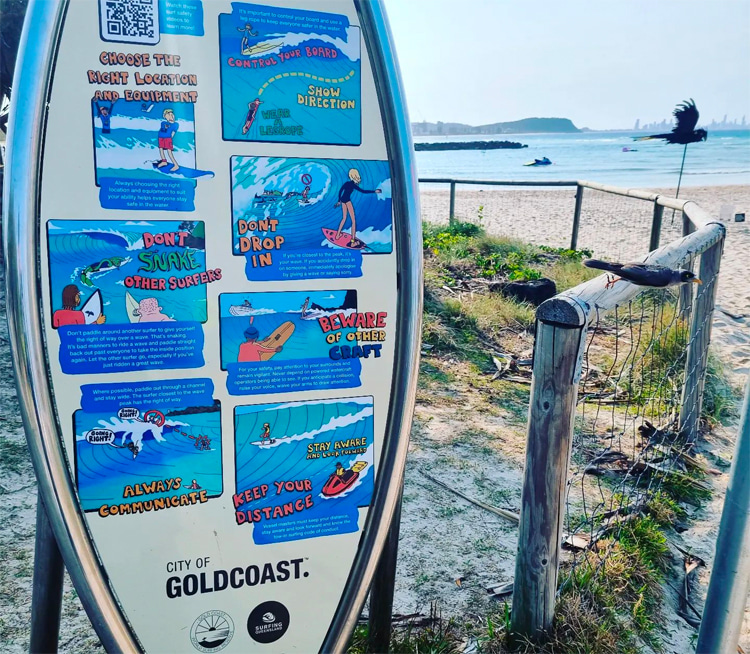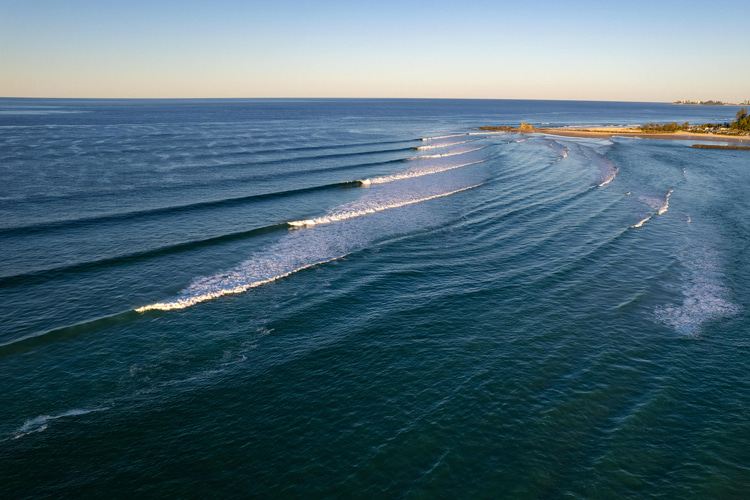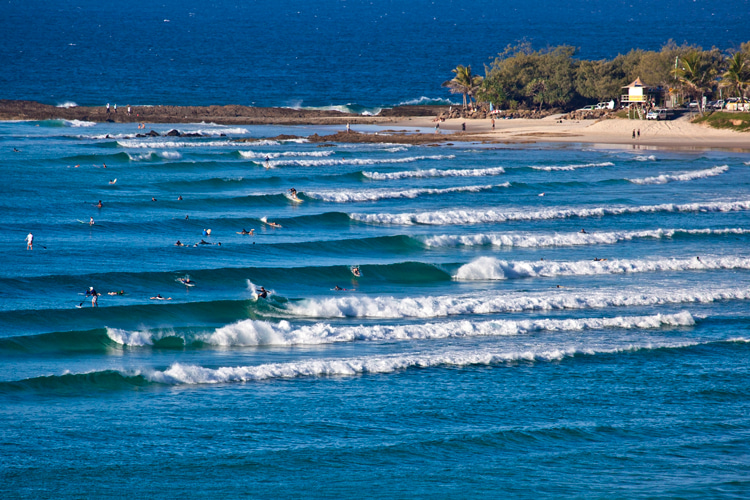Surfing is one of the most popular sports in Australia, with the Gold Coast as one of its multiple wave-riding activity centers.
Surfing participation continues to grow rapidly as a popular recreational sport supported by its healthy lifestyle.
According to Surfing Australia, the national governing body for the sport of surfing in the country, the nation has an estimated number of 1.7 million surfers and is growing.
Yet surfing's popularity presents overcrowding problems, especially at its most famous breaks.
As a result, the City of Gold Coast and World Surfing Reserve (WSR) Local Stewardship Committee has been working on a surf safety program titled "Good Surfer."
The goal is to raise awareness of surf etiquette rules and increase safety in local lineups.

Surf Safety Signs
Surf safety tips can be seen online with animated surf segment clips and updated surf safety signs established at Burleigh Point, Currumbin Alley, and Snapper Rocks.
Another sign will be erected at Kirra Point (Big Groyne) next to the WSR monument.
These strategic signs offer safe advice to alleviate surfing congestion and prevent surf rage by following the acknowledged "golden rules" of surfing rather than seeking enforcement or fines.
The informal golden rules depicted on the signs are as follows:
- Don't drop in;
- Don't paddle in front of an incoming surfer taking off;
- Don't snake another surfer who has been waiting patiently;
- Don't abandon your board;
- Wear a leg rope;
- Be aware of other craft, such as boat traffic, to avoid potential fatality;
The "Good Surfer" program is part of the City of Gold Coast's Surf Management Plan (SMP), the only one worldwide adopted by the World Surfing Reserves.
The authorities aim to protect and enhance the Gold Coast's surf amenity.
Whether you ride a shortboard, a Malibu, or a stand-up paddleboard, it's important to follow the fundamental guidelines of surf etiquette.
By embracing surf safety and the world's best practices at the local beaches, surfers are collaborating with the community to manage the WSR surf spots.
In March 2023, the City of Gold Coast renewed the Surf Management Plan for another five years.
The Gold Coast WSR is a 16-kilometer stretch of coastline from Burleigh Beach to Snapper Rocks.

Gold Coast: A Surfing Paradise
Over the past hundred years, the Gold Coast has transformed from a collection of coastal hamlets into one of the world's top vacation spots.
This tremendous growth can be attributed to its stature as a prime surfing location.
By the late 1910s, this stretch of Queensland's southern coast earned the title of a "surfer's paradise."
Consequently, by 1933, the town formerly known as Elston was rebranded as Surfers Paradise.
The rise in surfing's popularity during the 1950s and 1960s coincided with the Gold Coast's expansion.
Everywhere from Southport to Coolangatta, a range of accommodations sprouted to host the increasing number of visitors drawn to the shoreline.
The 1970s marked the emergence of a robust surfing sector on the Gold Coast.
By 1977, the region was primed for the spotlight, inaugurating the Stubbies Surf Classic at Burleigh Heads.
This competition signaled the beginning of the contemporary global surfing circuit.
The event was won by local surfing icon Michael Peterson, who is now honored with a statue at Kirra Beach.
Today, it's common to find oneself surfing next to a world-class champion on our famous waves, and the city is a frequent venue for major domestic and global surf competitions.


